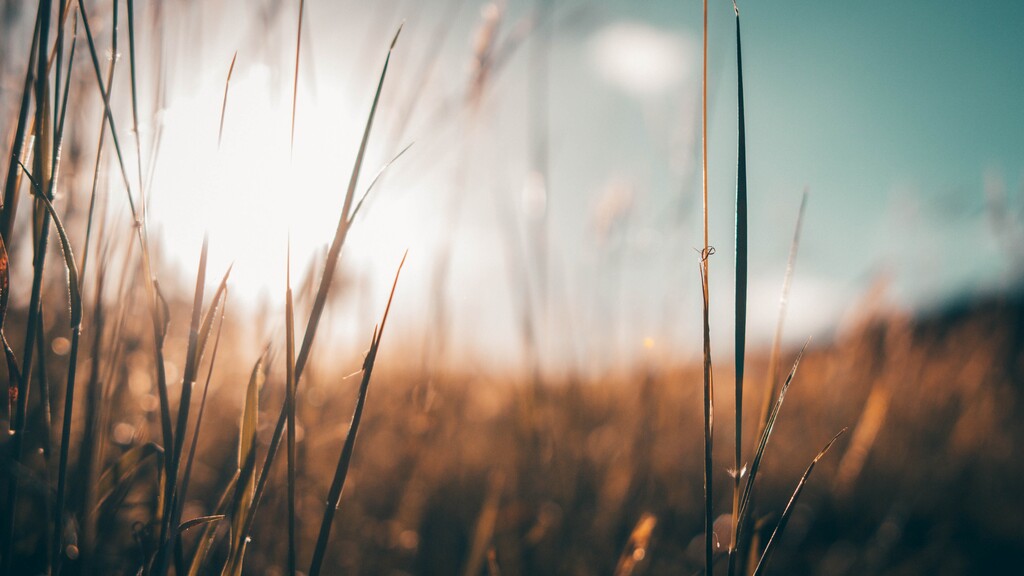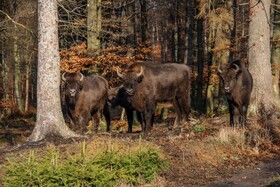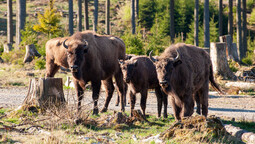

A small herd of wisents has been living in the Rothaargebirge mountains of North Rhine-Westphalia since 2013. After the animals were almost exterminated at the beginning of the 20th century, the Wisent-Welt-Wittgenstein Association succeeded in making the large wild animal at home in Germany for the first time. Since the herd is constantly growing and five bulls will become sexually mature with the next rut, a resettlement of the young animals is now necessary. In order to avoid the danger of inbreeding and to further guarantee the health of the herd of wisents, Naturefund is looking for a new home for the young bulls. It is also necessary to purchase an animal-friendly trapping device so that the animals can be trapped without stress and anaesthetic. Please help us with this!

Start: 17.01.2020
At Rothaarsteig
6.000 - 8000ha
A small herd of European bison has been living in the Rothaargebirge mountains of North Rhine-Westphalia. In the area of about 6,000 ha the freely roaming wisents carry numerous pollen and seeds in their fur or dung whereby they promote the biodiversity of forest ecosystems. With their hooves, their way of grazing, but also their dung, they create habitats for numerous insects, from which birds and bats in turn benefit.

Just a few centuries ago, the wisent was widespread in Europe and also populated a large part of the German forests. But since the beginning of the 20th century, the wisent, which is related to the American bison, is considered extinct in the wild. The Wisent-Welt-Wittgenstein association has set itself the goal of bringing Europe's largest wild animal back to Germany and released the first eight animals in the Rothaargebirge at the beginning of 2013. With success, the animals have adapted well and the herd has now grown to around 25 healthy animals. Naturefund has been an official partner since the beginning of the year 2020 and will support the project in several ways in the future: With 50,000 Euros the project will receive a large financial grant, but there will also be close cooperation in terms of content. There is also a scientific interest in the development of the herd of animals, because the usefulness of the bison for ecological landscape management needs to be investigated more closely.
In addition to the goal of protecting the wisent from extinction, the large wild animal is also an interesting object of research: the freely roaming wisent promotes the biodiversity of forest ecosystems and thus probably also supports the natural adaptation mechanisms of forests to climate change. Since the animals in the Rothaargebirge move freely in an area of about 6,000 ha, they carry numerous pollen and seeds in their fur or dung. Where large grass-eating animals such as wisents can graze all year round, a multitude of small biotopes are created. With their hooves, their way of grazing, but also their dung, they create habitats for numerous insects, from which birds and bats in turn benefit. In addition to the herd structure and the activity of the animals, the benefits of the wisents for the forest and the climate still need to be scientifically investigated. At present, various universities and independent research groups are investigating numerous issues of the entire species conservation project.
The main reasons for the extinction of the wisents were changed ecosystems and the hunting of the animals, either as a source of food for humans or because of their reputation as pests in agriculture. After the last wild bison was shot in the 1920s, animal welfare activists soon began a breeding program to gradually rebuild the populations. There were still 54 surviving bisons in zoos and animal parks, but only eleven animals were suitable for breeding. In the 1950s, the descendants of the last eleven herbivores were released into the wild for the first time in Eastern Europe. Since then, there are wisent herds living in the wild in Romania, Bulgaria and Russia as well as in the Białowieża National Park in the border area between Poland and Belarus.
Here you can find information and news about this project.

Sorry, there is no comment for this project yet. Write the first one!